A detailed overview of Critical Thinking Exercises
“Critical Thinking” is a conceptual essay that explains the importance, benefits, and process of thinking critically in everyday life. It encourages students to question, evaluate evidence, and not blindly accept claims or beliefs.
1. Understanding the text
a. What is critical thinking?
Critical thinking is the ability to think clearly and rationally, understanding the logical connection between ideas.
b. What, according to the author, is the goal of education?
The goal of education is to make students think critically rather than just memorize facts.
c. Why is it necessary to think critically?
It is necessary to think critically to avoid being misled by false beliefs, biased information, or emotional manipulation.
d. What are the three kinds of thinkers mentioned by the writer?
The three kinds are:
- Naive thinkers
- Selfish critical thinkers
- Fair-minded critical thinkers
e. What are the qualities of a critical thinker?
Some qualities include:
- Open-mindedness
- Fair-mindedness
- Curiosity
- Skepticism
- Rationality
🔍 Critical Thinking Questions
a. Do you think critical thinking is important in your academic and personal life? Explain.
Yes, critical thinking helps analyze situations logically. It improves decision-making and helps avoid being misled by fake news, biased people, or false beliefs.
b. How can a person improve their critical thinking skills?
A person can improve by:
- Reading and researching from multiple sources
- Asking questions
- Practicing self-reflection
- Engaging in discussions and debates
c. Write about a situation where you used critical thinking to make a decision.
(Example)
When choosing a college major, I researched the scope, future opportunities, and my interest areas instead of just following what friends were doing.
📊 Importance of Critical Thinking in Nepal
In Nepal, many social and political issues are driven by emotion, superstition, or misinformation. Critical thinking is essential for:
-Preventing the spread of fake news on social media
-Challenging traditional dogmas
-Making informed decisions (e.g., elections, education)
-Promoting scientific mindset
Chapter 1: Critical Thinking Exercises
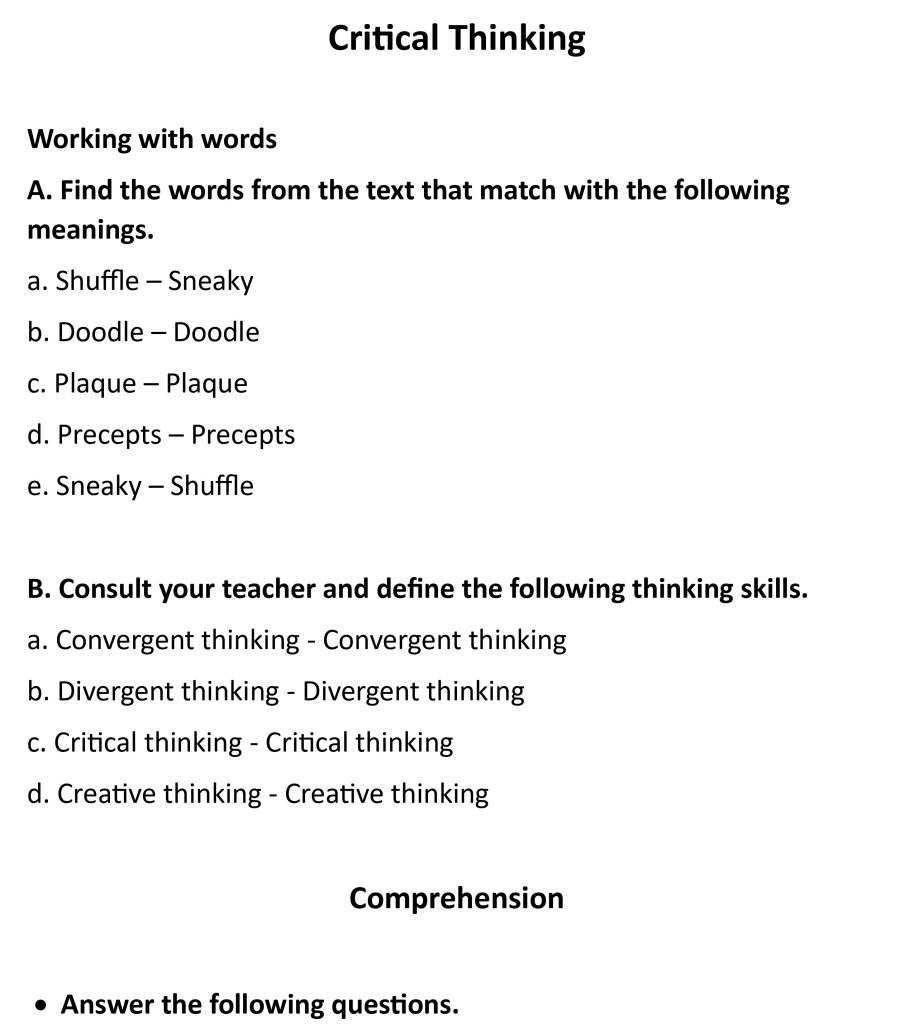
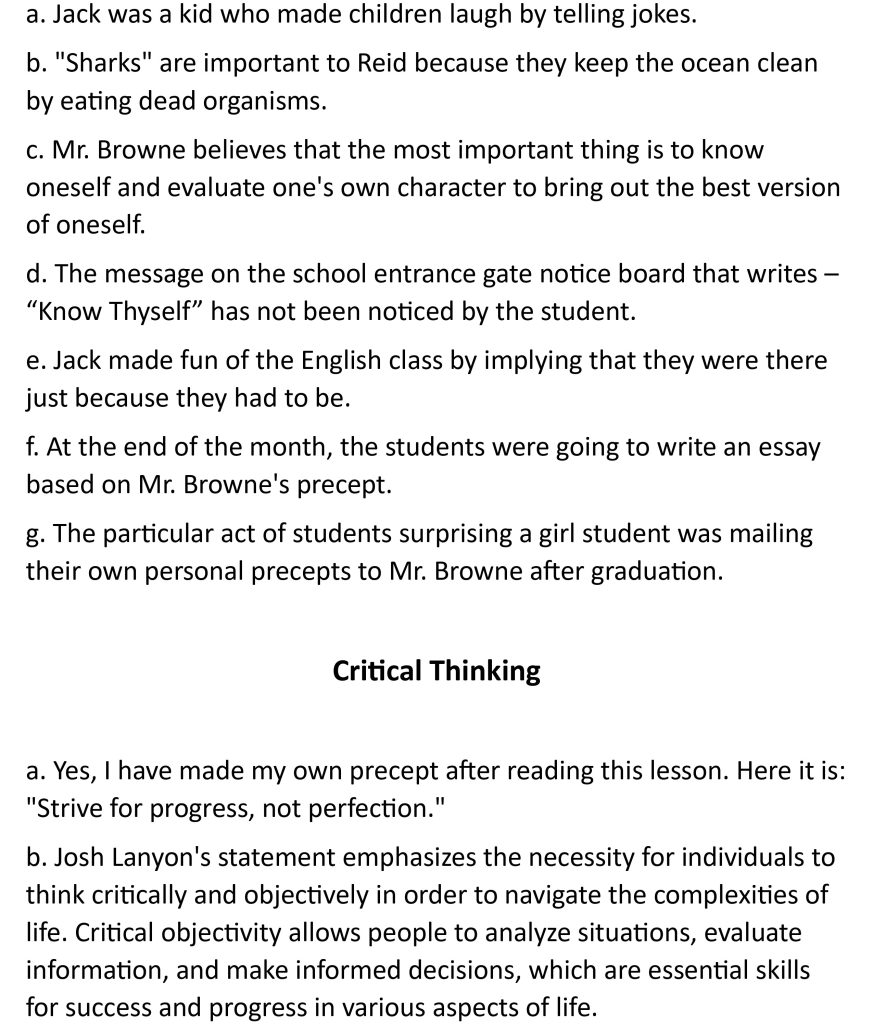
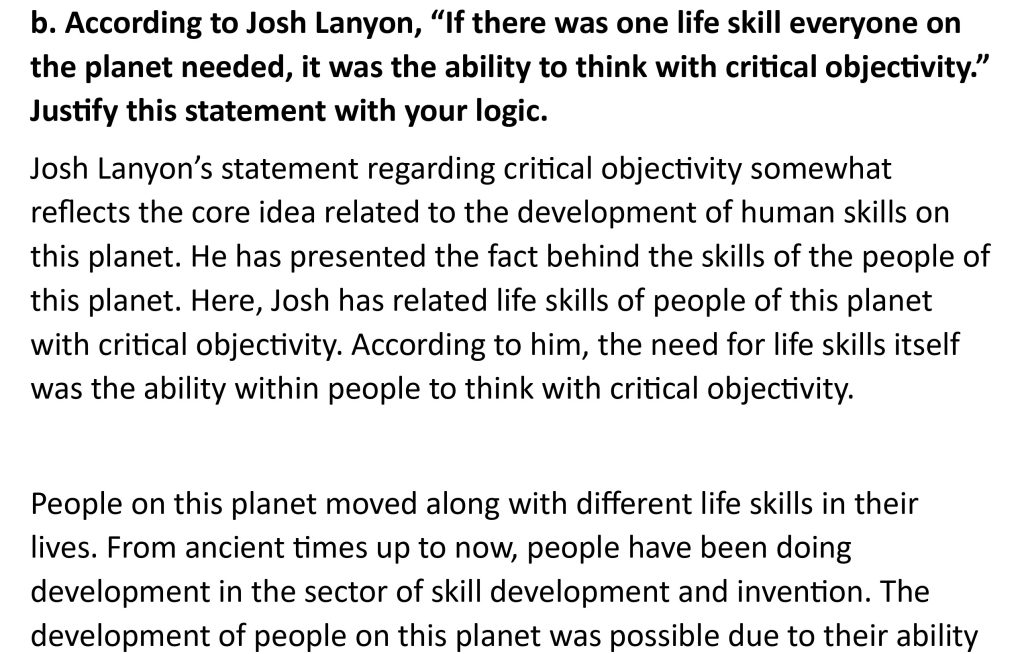
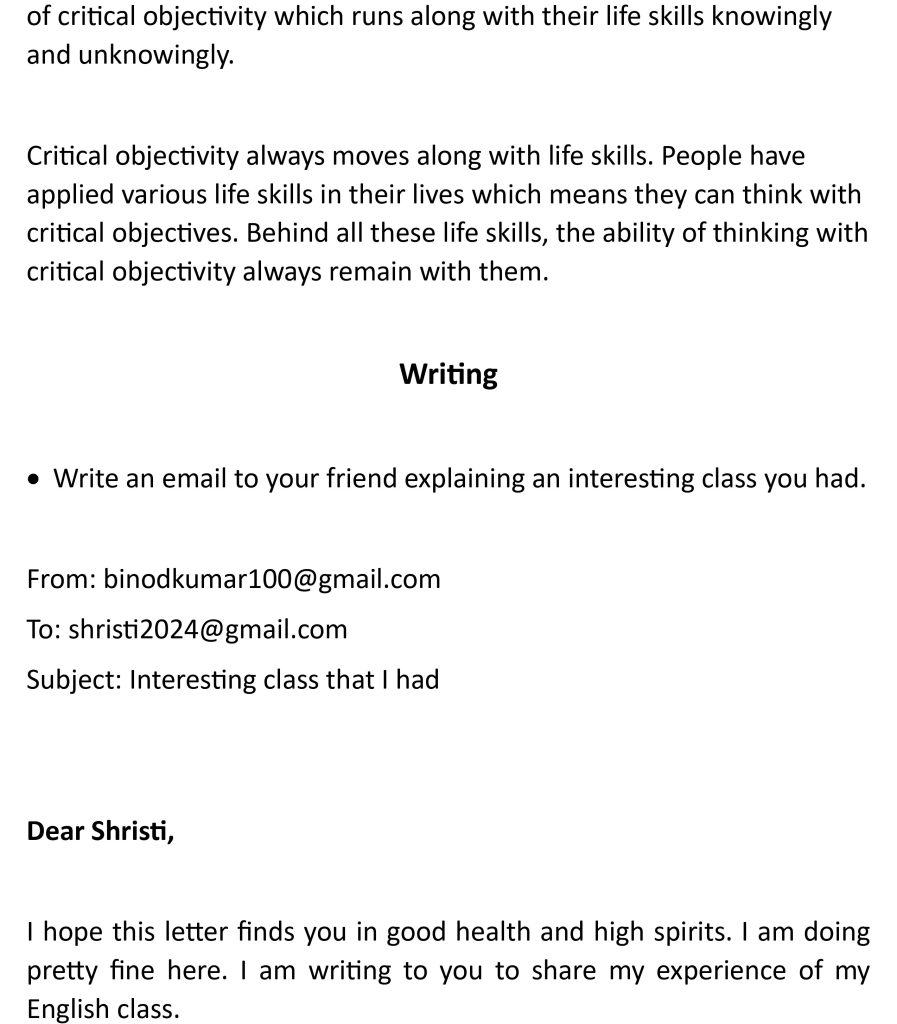

Regards,
Binod Kumar
Audio summary of the letter:
Continue reading ‘critical thinking exercises’ in meroguru app
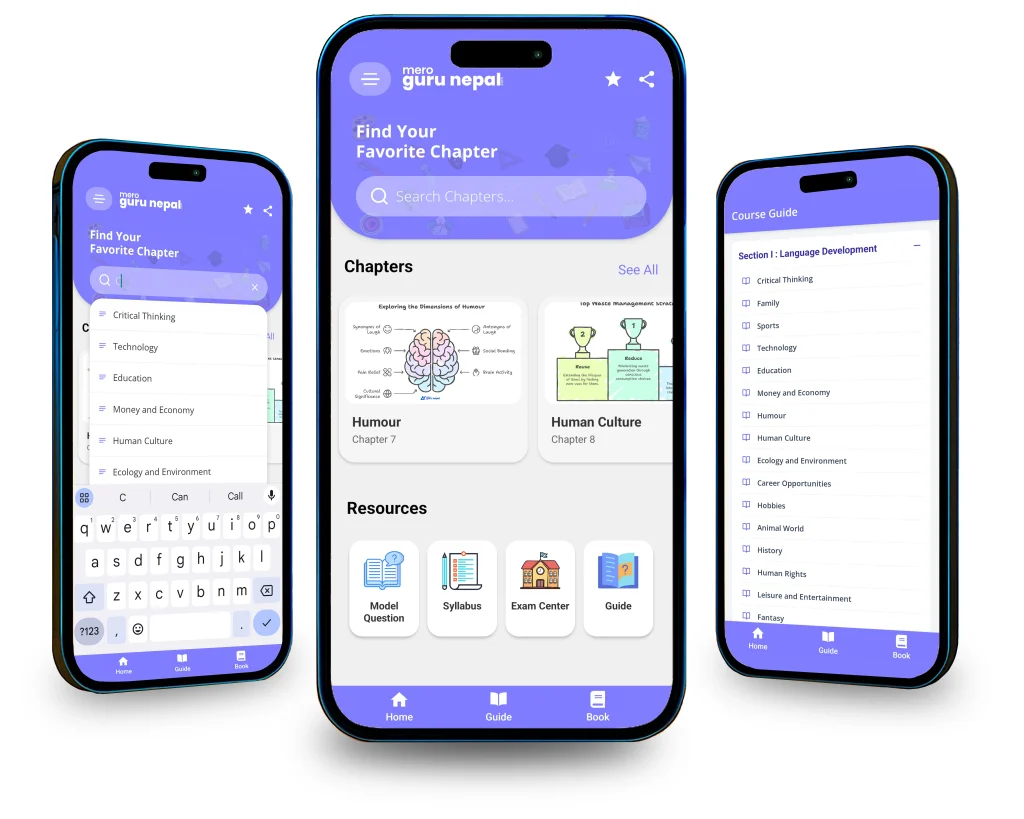
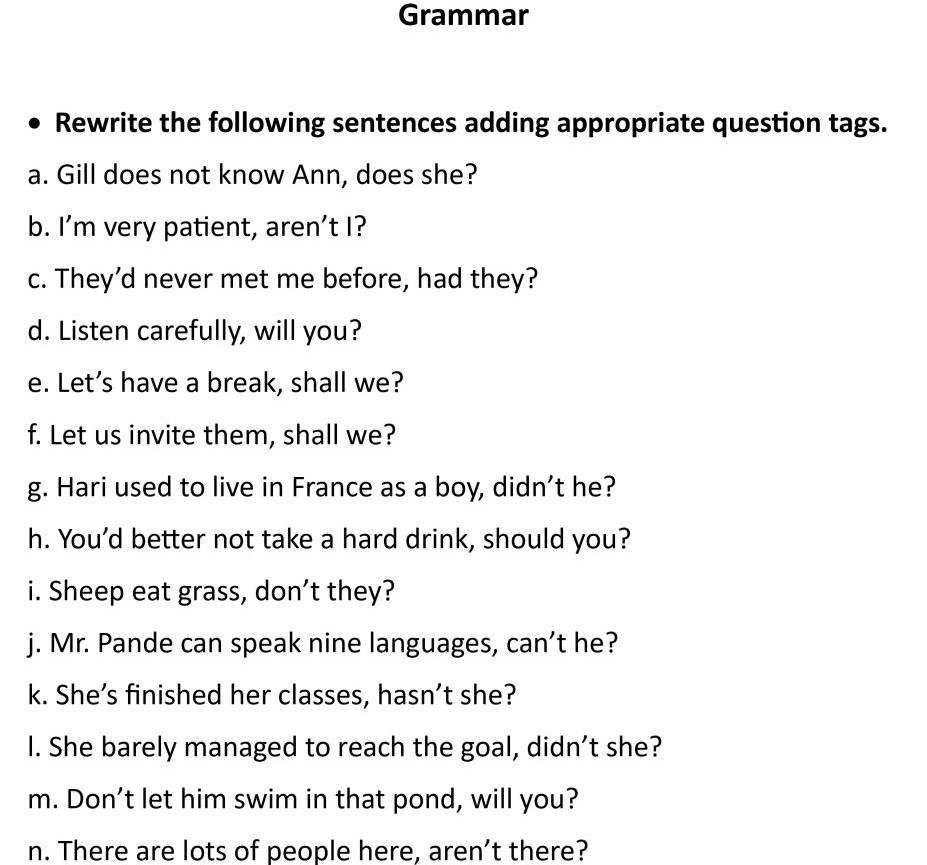
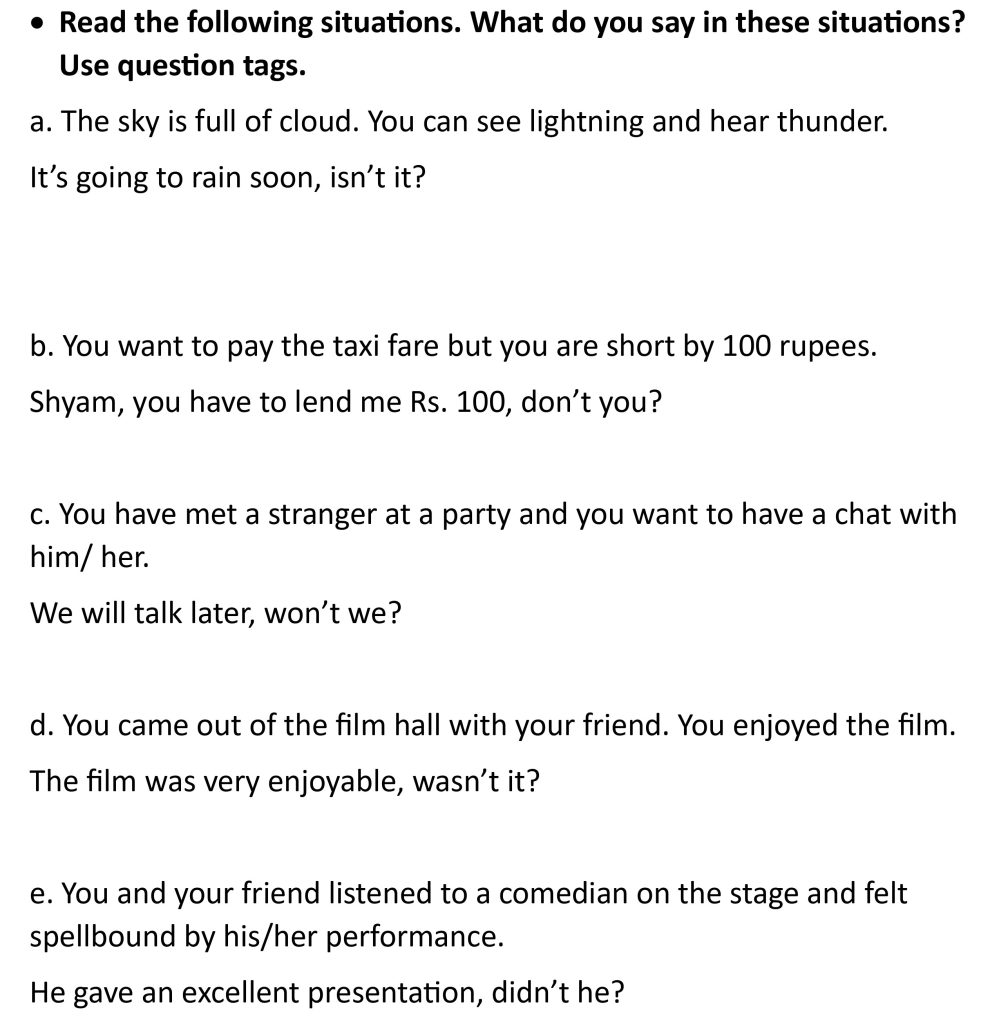
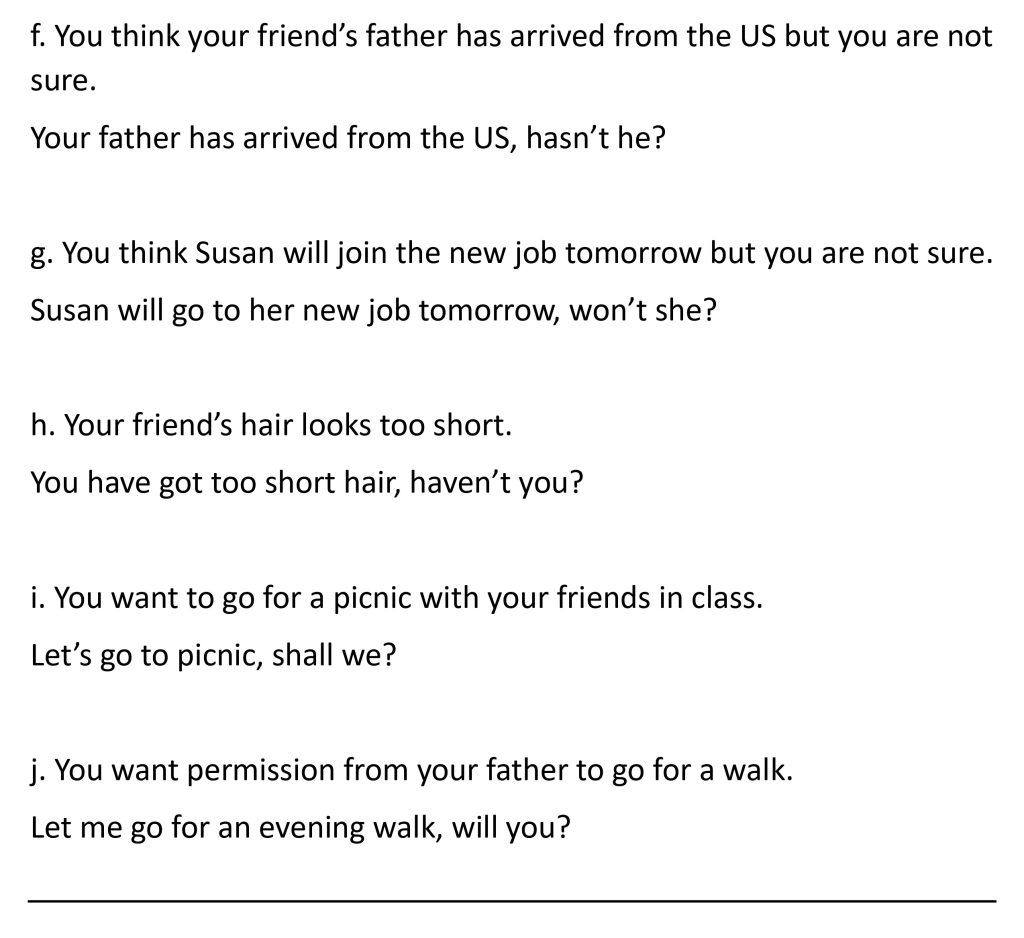
Summary of “Critical Thinking Exercises”
The chapter “Critical Thinking” in Class 12 English introduces students to the importance of developing higher-order thinking skills such as logical reasoning, objective analysis, and personal reflection. Through classroom activities, examples, and reflections like Mr. Browne’s precepts and the theme “Know Thyself,” the lesson emphasizes the value of questioning assumptions and understanding oneself. The story unfolds with classroom interactions where students discuss morals and individuality, reinforcing the idea that critical thinking is essential for navigating life. The chapter also touches upon types of thinking—convergent, divergent, creative, and critical—and includes practical grammar exercises like forming question tags and crafting meaningful conversations.
Key Takeaways of “Critical Thinking Exercises”
- Definition: Critical thinking is the ability to think clearly and rationally, understanding the logical connection between ideas.
- Types of Thinking:
- Convergent thinking: Focused, logical thinking aimed at finding a single solution.
- Divergent thinking: Creative thinking that generates many solutions to a problem.
- Creative thinking: Inventive and original thinking.
- Critical thinking: Evaluative thinking that involves analyzing and reasoning.
- Mr. Browne’s Precept: Encourages students to develop their own moral codes through introspection and writing.
- Theme “Know Thyself”: Highlights the importance of self-awareness in moral and intellectual development.
- Role of Education: Education should foster curiosity, moral reasoning, and independent thinking.
- Classroom Activities: Include making jokes, writing essays, and mailing precepts, encouraging engagement and reflection.
- Grammar Focus: Mastery of question tags in various real-life situations.
- Emotional Impact: Shows how a thoughtful teacher can inspire lifelong values and skills.
- Life Skills: Emphasizes critical objectivity as a foundational life skill.
- Personal Connection: Encourages students to reflect and write about their own classroom experiences.
FAQs – Critical Thinking Exercises
What is the main theme of the chapter “Critical Thinking” in Class 12 English?
The main theme is the importance of developing critical thinking and self-awareness to become morally and intellectually mature individuals.
Who is Mr. Browne in the chapter and what role does he play?
Mr. Browne is a thoughtful English teacher who encourages his students to write personal precepts and reflect on their values, helping them grow intellectually and emotionally.
What does “Know Thyself” mean in the context of Class 12 English’s chapter “Critical Thinking”?
It refers to understanding one’s own values, behavior, and identity, which is crucial for personal growth and moral development.
What are the four types of thinking mentioned in the chapter?
They are convergent thinking, divergent thinking, critical thinking, and creative thinking.
According to Class 12 English, why is critical thinking an essential life skill?
Critical thinking enables people to analyze information objectively, solve problems effectively, and make informed decisions in life.
How does the classroom activity involving precepts help students in this lesson?
It encourages students to express their personal beliefs, reflect on ethics, and improve their writing and thinking skills.
What example of surprise behavior is shown by students in the Class 12 English chapter “Critical Thinking”?
Students mailed their own personal precepts to Mr. Browne after graduation, showing they valued his teaching.
What is the significance of Josh Lanyon’s quote in the chapter?
It underscores the value of objective thinking as a universal life skill necessary for personal and societal progress.
How does the grammar section contribute to the development of critical thinking?
By practicing question tags in real-life contexts, students sharpen their attention to language structure and situational awareness.
What lesson does the writer of the email share in Class 12 English about his experience with English classes?
He shares that English classes were the most enjoyable and influential, helping him develop both academically and personally.
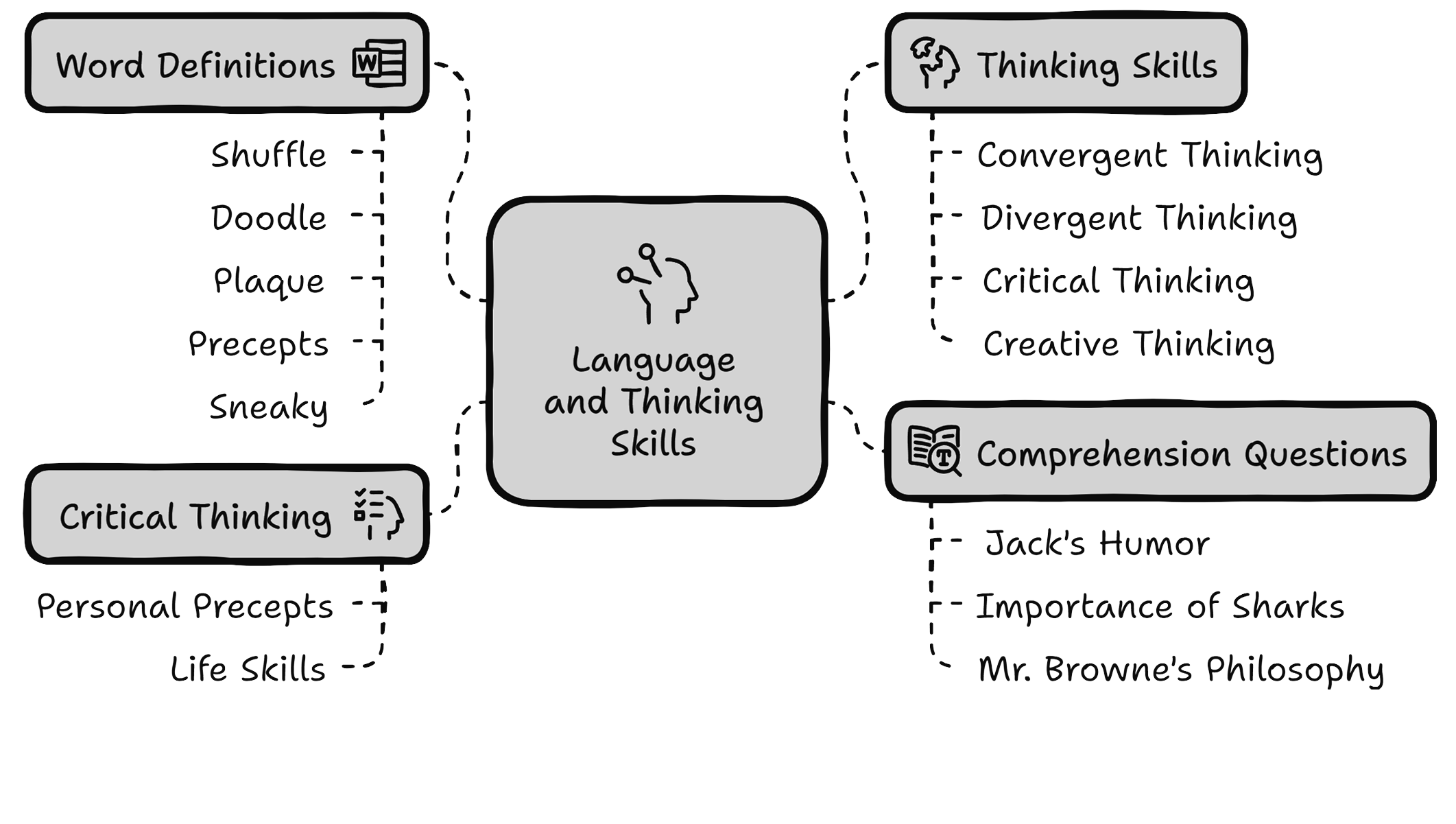
Leave a Reply